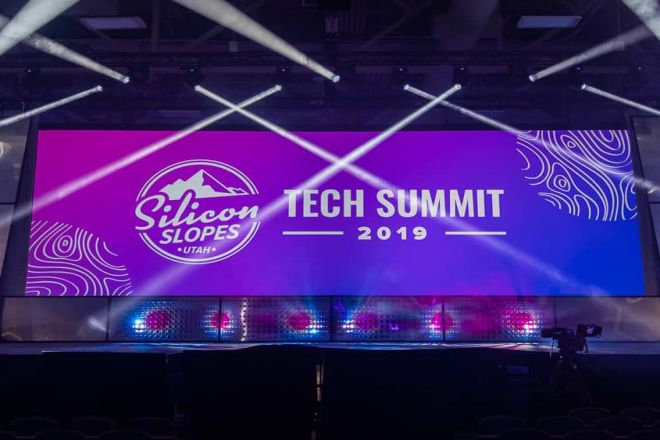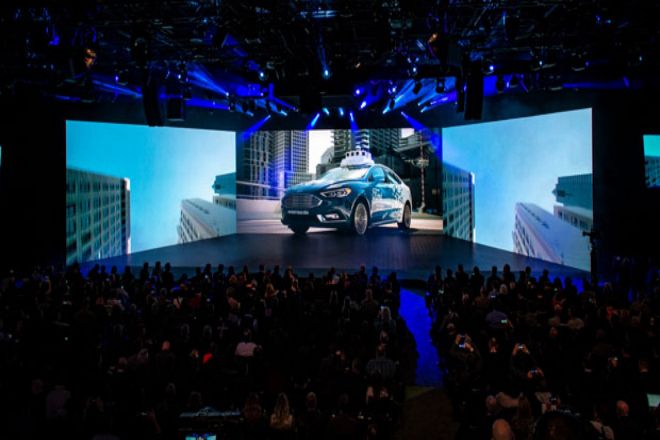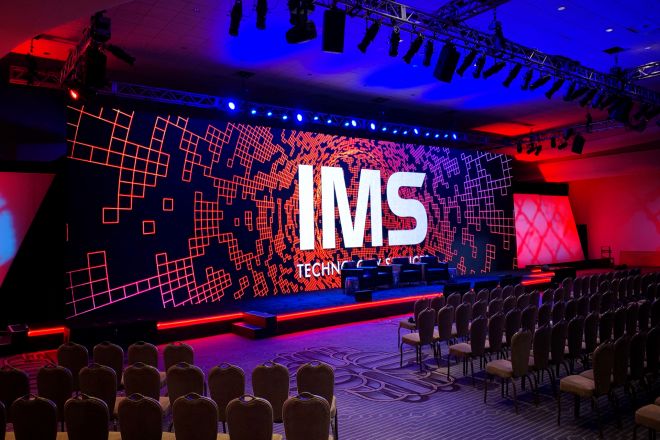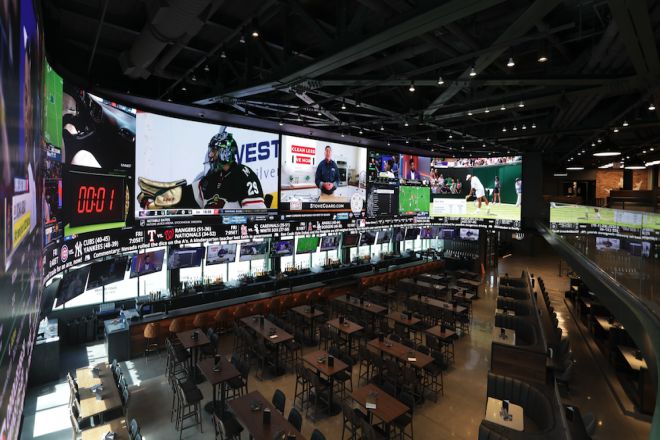Introduction

Today has long become an indispensable part of today’s activities. Whether it is a large-scale concert, sports event, commercial exhibition, or a small party or corporate meeting, the LED display screen, with its unique charm, adds rich visual elements to the event and enhances the overall viewing experience and sense of participation.
However, judging the effect of LED displays is not easy. It involves multiple considerations, including image quality performance, playback content, technical stability, and audience feedback. Every aspect may affect the final effect of the LED display and is directly related to the success of the event.
Therefore, this article will delve into how to judge the effect of LED display screens in an event; let’s take it.
1. LED display screen quality performance

Image quality performance is an indispensable key indicator when evaluating the effect of LED displays in events. Image quality performance directly determines whether the audience can obtain a clear and realistic visual experience, thus affecting the overall effect of the event.
The following is a detailed analysis of the three main aspects of image quality performance – resolution and sharpness, color performance, and brightness and uniformity.
- Resolution and clarity
Resolution is the basis for LED display screen quality performance. It determines the amount of detail the display can present, which in turn affects the clarity of the picture. The high-resolution LED display can present more delicate and clear images, allowing the audience to better distinguish every detail in the picture.
However, the choice of resolution is not always better; rather, it needs to be determined based on the specific needs of the event.
For example, in a large outdoor event, because the audience is far away from the display screen, an excessively high resolution may not be needed, while in an indoor event with close viewing, a higher resolution is needed to ensure the clarity of the picture.
- Color expression
Color performance is another important aspect of the image quality of LED displays. Color reproduction, saturation, and contrast jointly determine the color performance capabilities of the display.
Excellent color performance can make the picture more vivid and realistic, enhancing the audience’s experience. When choosing an LED display, you need to pay attention to its color performance capabilities to ensure that it can accurately restore the color atmosphere of the event site.
At the same time, according to the theme and atmosphere of the event, the color performance of the display can be adjusted to achieve better visual effects.
- Brightness and Uniformity
Brightness and uniformity are the keys to maintaining the best display effect of LED displays under different ambient lights. Brightness determines the visibility of the display in a bright environment, while uniformity affects the brightness distribution of the entire screen.
Too high a brightness may cause the viewer to feel dazzling, while too low a brightness may make the picture unable to be presented clearly. Therefore, when selecting and using LED displays, the brightness needs to be reasonably adjusted according to the ambient light conditions of the event venue.
At the same time, it is also very important to ensure the brightness uniformity of the screen to avoid picture distortion caused by uneven brightness.
2. Playback content and creativity of LED display screen
Playback content and creativity are the two core elements for LED displays to display effects in events. They are not only related to the audience and experience of the event but also an important means to enhance the atmosphere of the event and attract the audience.
First, you look at the match of the playback content. The content played by the LED display needs to be closely consistent with the theme of the event in order to effectively convey the core concept and emotional atmosphere of the event.
For example, in concerts or concerts, playing music videos, MVs, or special images related to singers can enhance the audience’s participation and emotional resonance, while in corporate conferences or exhibitions, playing introductions related to products or brands, promotional videos can better demonstrate the characteristics and value of the product or brand.
Therefore, when choosing content to play, you need to have a deep understanding of the theme and purpose of the event to ensure that the content is matched and consistent.
In addition to matching, creative performance is also an important consideration in the content played by LED displays. Creative expression can be achieved through various forms, such as dynamic images, special effects processing, interactive links, etc.
These creative elements can not only enrich the visual effects of the picture but also attract the audience and enhance their sense of participation and interest. For example, in large-scale events, LED displays can be used to play special effects animations or real-time interactive games to interact with the audience, making the event more interesting and interactive.
In speeches or lectures, LED displays can be used to present the speaker’s Maps or important data allowing the audience to understand and remember the speech content more intuitively.
When using creative elements, you need to pay attention to the integration of creativity and activities to ensure that the creative elements can be naturally integrated into the activity instead of being abrupt or disconnected.
At the same time, you also need to consider the audience and participation and choose creative forms that can resonate and interest the audience in achieving better results.
3. Technical stability and reliability of LED display screen

Technical stability and reliability are key indicators of the performance of LED displays in events. They are directly related to whether the display can operate continuously and stably and bring a high-quality visual experience to the audience. Below is a detailed analysis of device quality and playback stability.
First of all, equipment quality is the basis for ensuring the stable operation of LED displays. High-quality hardware equipment, such as high-performance chips and drivers, can ensure that the display maintains stable performance over long periods of operation and reduces the risk of failure and damage.
When choosing an LED display, we should pay attention to the hardware technology and quality used to ensure that they can meet the needs of the event and work normally in harsh environments.
Secondly, playback stability is one of the important indicators to evaluate the effect of LED display. During the playback process, if the display screen freezes or delays, it will not only affect the audience’s experience but may also destroy the overall atmosphere of the event.
In order to ensure smooth playback, we need to pay attention to the display’s display’s cessing capabilities and response time. A display with high data processing capabilities can process playback content faster and reduce lagging, while a fast response time can ensure smooth screen switching and avoid latency problems.
In addition, in order to ensure the technical stability and reliability of LED displays, we also need to pay attention to the following points:
Perform regular maintenance and upkeep on the display screen to ensure it is in good working order.
In severe weather conditions, such as strong thunder and lightning, strong winds, etc., the use of the display should be suspended to avoid potential safety risks.
When installing and using the display, relevant safety regulations and operating guidelines should be followed to ensure the safe and stable operation of the equipment.
4. Live audience feedback and interaction
Audience feedback and interaction are important dimensions to measure the effectiveness of LED displays in events. Audience satisfaction and the performance of the display in promoting interaction directly reflect the effect of the display on improving the event atmosphere and audience participation.
First of all, audience satisfaction is one of the key indicators for evaluating the effectiveness of LED displays. By collecting audience feedback on the display effect, we can understand the audience’s picture quality, content, interactive links, etc.
For example, viewers may be satisfied with the high-definition picture quality and vivid content of the display, or they may have suggestions for improvements in the selection of playback content or interactive methods.
This feedback helps us continuously optimize the use strategy of LED display screens and improve audience satisfaction and participation.
Secondly, LED displays play an important role in enhancing audience interaction. Through real-time interaction, voting, and other functions, the display can closely connect the audience with the event and enhance the audience’s participation and experience.
For example, at a concert, the audience can participate in real-time interactive games and interact with singers through the display; at exhibitions, the audience can vote for exhibits through the display and express their preferences.
These interactive links not only increase the fun and interactivity of the event but also enable the audience to participate more deeply in the event.
There are a number of strategies you can employ to improve engagement. For example, design more attractive interactive links, such as lottery draws, quizzes, etc., to stimulate the audience.
At the same time, optimize the interactive process to ensure that the audience can participate in the interaction conveniently and quickly; in addition, you can also combine social media and other channels, expand the influence and participation of interactions.
5. Tips for using LED displays at events

- Plan ahead:
During the event preparation stage, it is necessary to make detailed plans for the use of LED displays. This includes determining the size of the display, its resolution, where to install it, and what content to play. Planning in advance can ensure that the display will fit the event theme and venue environment and achieve the desired effect.
- Choose the right content:
The playback content should be closely related to the theme of the event while focusing on creativity and appeal. You can produce exquisite pictures, animations, or videos and creatively design them based on the characteristics of the event and the preferences of the target audience to enhance the audience’s participation and interest.
- Ensure technical stability:
Fully test the LED display before the event to ensure its technical stability and reliability. Check the hardware equipment, connection lines, and playback system of the display screen to ensure that they can operate normally during the event and avoid problems such as malfunctions or lags.
- Adjust brightness and color:
Appropriately adjust the brightness and color settings of the LED display according to the light conditions of the event venue and the distance of the audience. Ensure that the picture is clear and colorful while avoiding excessive brightness or darkness that may cause discomfort to the audience.
- Pay attention to interactive links:
Use LED displays to design interactive links to increase the audience’s sense of participation. Real-time voting, interactive games, etc., can be used to allow the audience to interact with the display and make the event more interesting and interactive.
Conclusion
To sum up, judging the effect of LED display screens in an event is a comprehensive process that requires us to consider and analyze it from multiple angles.
Only by continuously improving the effect of LED displays can we better add color to events and enhance the audience’s participation and satisfaction.
Finally, if you want to know more about LED displays, please get in touch with us.
